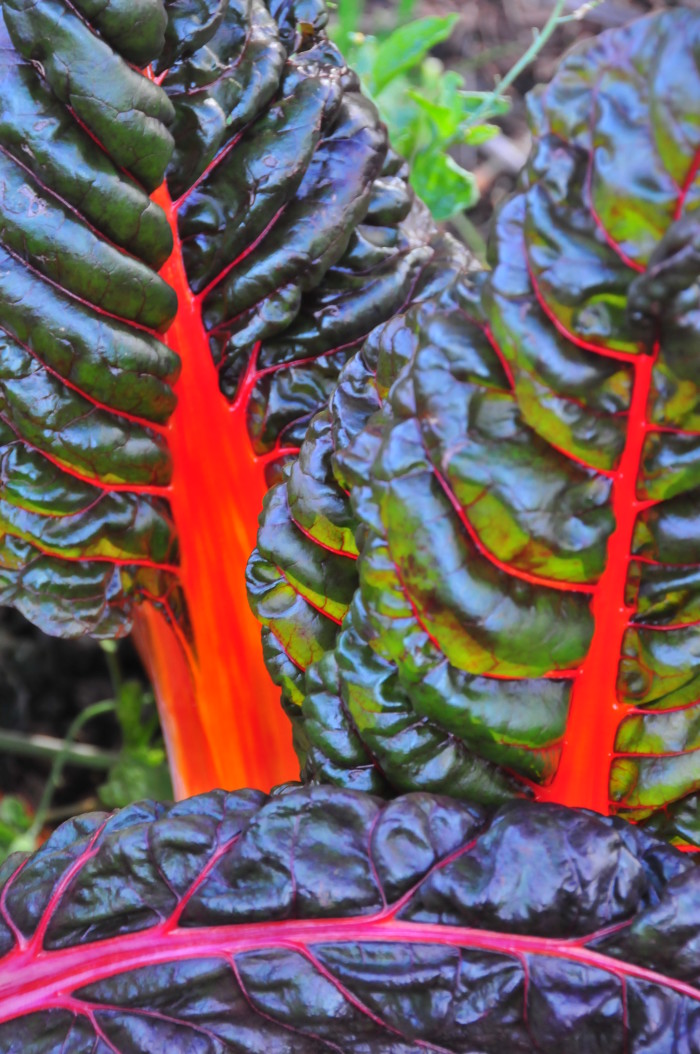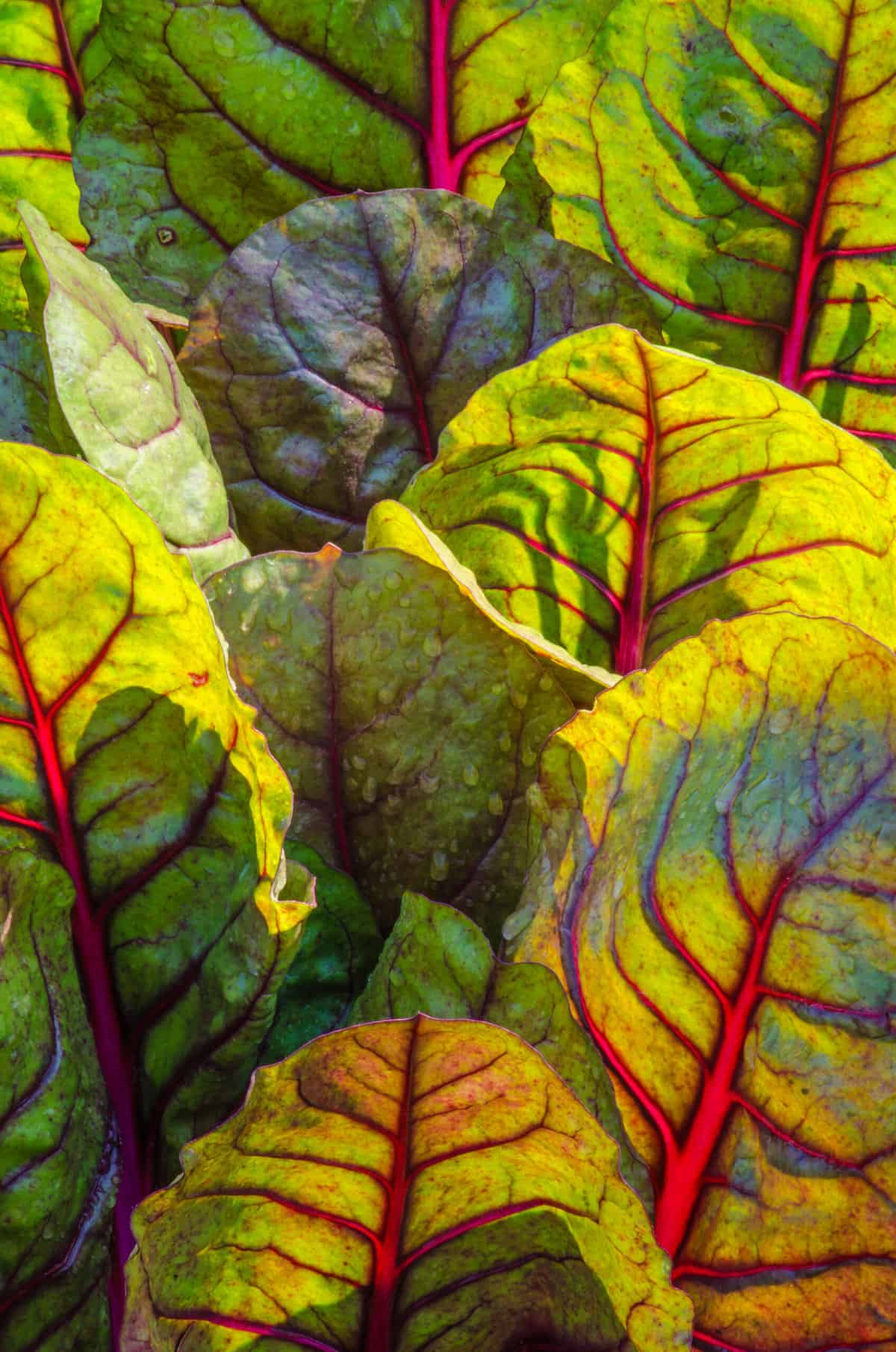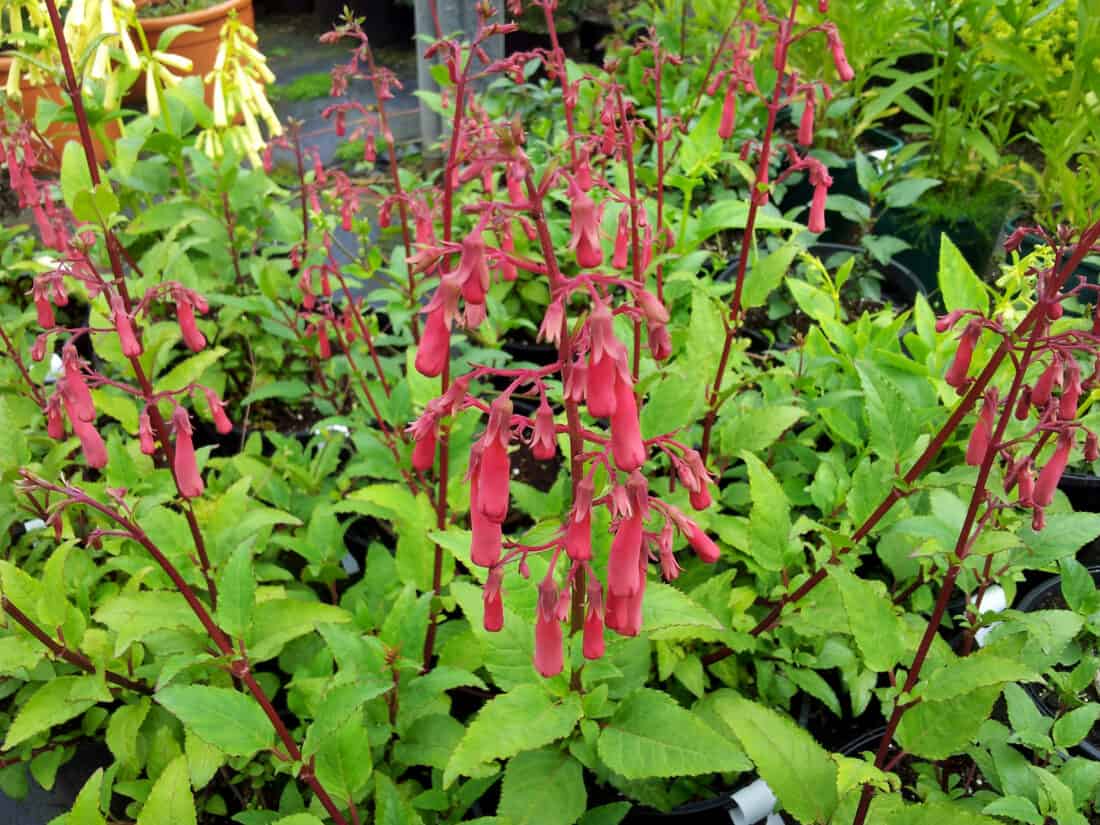The closer we get to spring, the more I long for some bright light (and the brightness of fresh greens, garden plants, and plants like this gorgeous Swiss chard). Yesterday, as the kids were off from school, we spent some time in the cold winter landscape. Even though the ground was covered with over a foot of snow, the day was sunny and bright. I love seeing folks outside on increasingly longer days, soaking up the sunshine despite the bitter temperatures.

Back in the office, I have to get my plant lists finalized and sent to nurseries. If I wait too long, I know some of the best plants will be missed for the summer.
A trend that I really like and am looking to do more of is mixing ornamental vegetables into the ornamental borders.
Several public gardens already use vegetables from variegated corn to tri-colored peppers in the ornamental border. Before you think about cabbages and kales in the early spring or autumn planting scheme, think again – there are some more unexpected options.
Last summer, I added a globe artichoke to an existing perennial border. It was the bold, silver statement that the border needed.
For this coming summer, we plan to use more of the Bright Lights Swiss chard. As an annual in our Maine climate, the stem colors are remarkable.
Here is the description OF Bright Lights Swiss Chard from the Johnny’s Selected Seed catalog:
“Lightly savoyed, green or bronze leaves with stems of many colors including gold, pink, orange, purple, red, and white with bright and pastel variations.”
-Johnny’s Selected Seeds
In other words, a lot of remarkable and smile-inducing colors.
We have grown Bright Lights in our kitchen cafe garden for several years. This summer, I am planning on featuring it in the first bed you come to as you enter the walk to our Visitor Center at Coastal Maine Botanic Garden.
When I did a walk-through of the summer designs with our staff, they all did a collective “aaah” when I mentioned using Bright Lights Swiss chard as an annual bedding plant.
Companion plants for Bright Lights Swiss Chard in the Ornamental Border



I have it nestled between Phygelius ‘Devil’s Tears’ and Agastache ‘Ava.’ Combined, these colors will make our guests either smile and want to enter or turn around and return to their car. You know that saying, art should elicit a response, either good or bad? If there is no response, then you must be playing it too safe. We shall see. And please do not turn away!
How to Plant Bright Blights Swiss Chard
In case you want to impress your friends at your next cocktail party, the entire Latin name for Bright Lights is Beta vulgaris subsp. cicla var. flavescens ‘Bright Lights’. For brevity’s sake, I will continue to call it Bright Lights Swiss chard.
Plant small plants of Bright Lights when the soil is between 50 and 80 degrees Fahrenheit. You can also direct sow the seeds when the soils are the same temperatures.
In warmer climates, Bright Lights may fade in color or struggle to grow but if you live in the Deep South and you are out working in the garden when it is over 95 degrees, then that is your own fault.
Consider it your retribution for making fun of New England during the cold wintertime.
Have you grown Bright Lights or any of the Swiss chards? Are you mixing vegetables into your ornamental plantings?
–Rodney
I love the look of the red chards in the flower garden, as well as the red leafed beets. So pretty, and so tasty. I prefer the taste of the red chards to the plain green.